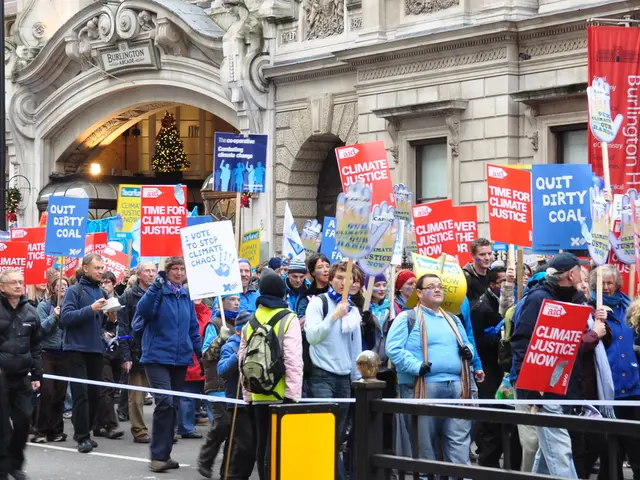Politics Shaping the Pure Ideology of Clothing Industry
In the ever-evolving world of fashion, a significant shift is underway. The regulation of harmful chemicals in the industry is no longer a distant dream, but a pressing necessity for the preservation of both human and planetary health.
Consumers are becoming increasingly conscious, ditching fossil-fuel-derived fabrics and reading clothing labels with the same care once reserved for food or skincare products. This shift in consumer behaviour is a response to the growing awareness about the potential dangers lurking in the clothes we wear.
Brands such as 3M, DuPont, and Chemours, along with certain cosmetics and textile companies, have found themselves in the crosshairs of public health legislation. These companies have been found to have products containing PFAS toxins, a group of chemicals that can travel long distances via air and water, polluting regions far from their source and contributing to a global pollution crisis.
The movement for ethical fashion, rooted in climate activism, has gained traction with both progressives and conservatives. However, profit often drives the use of "clean" and "non-toxic" language in fashion more than truth. Despite the widespread use of these terms, there are no binding rules on which chemicals must be excluded, how materials are sourced, or what qualifies as "non-toxic" in fashion.
The term "clean" has no clear legal definition in fashion in the US or EU. This lack of clarity leaves consumers vulnerable, as they may think they're making sustainable choices, but brands may not have to change their operations to use these terms. Clothing labels rarely disclose the chemical finishes used, leading to consumer unawareness of these invisible dangers.
Harmful substances like BPA and PFAS have been detected in a wide range of garments and household textiles. Even fast fashion giants like Temu, Shein, and AliExpress have been found to have items testing positive for these substances. These chemicals can seep through the skin, disrupt hormones, weaken the immune system, impair fertility, and even raise cancer risk.
The greatest exposure to these harmful chemicals falls on people with the least protection and power in the fashion supply chain, particularly Black and Brown garment workers. Regulators in the United States and European Union are targeting PFAS in forthcoming public health legislation, but proposed legislation that could establish clearer chemical safety standards has faced industry pushback and sluggish implementation over the past few years.
The success of the movement for clear chemical safety standards in fashion depends on bridging ideological divides. The current administration has weakened air pollution rules, defunded protections for communities hardest hit by toxic chemical pollution, and delayed long-fought bans on asbestos and PFAS in wastewater.
On a positive note, clean fashion, made from organic cotton, hemp, bamboo, or silk, typically free of synthetic dyes and chemical finishes, is growing in popularity. This shift towards more sustainable and safer materials offers a glimmer of hope in the fight against harmful chemicals in fashion. As consumers continue to demand transparency and accountability, the fashion industry may be forced to confront its environmental footprint and make necessary changes for the sake of our planet and our health.
Read also:
- Peptide YY (PYY): Exploring its Role in Appetite Suppression, Intestinal Health, and Cognitive Links
- Toddler Health: Rotavirus Signs, Origins, and Potential Complications
- Digestive issues and heart discomfort: Root causes and associated health conditions
- House Infernos: Deadly Hazards Surpassing the Flames








